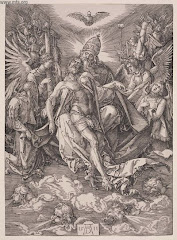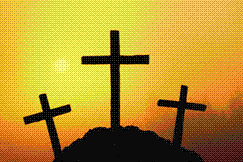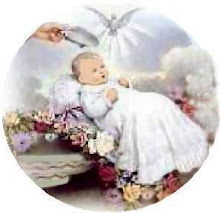
I'm a Lutheran, therefore I celebrate Advent. I discovered last year that many Christians don't know what Advent is. I thought everyone celebrated Advent.
From the LCMS website: (http://www.lcms.org/)
Q. Why does the church year begin at Advent, what is the history of Advent, and what is the history behind the Advent candles and wreath?
A. The word "advent" is from the Latin word for "coming," and as such, describes the "coming" of our Lord Jesus Christ into the flesh. Advent begins the church year because the church year begins where Jesus' earthly life began--in the Old Testament prophecies of his incarnation.
After Advent comes Christmas, which is about his birth; then Epiphany, about his miracles and ministry; then Lent, about his Calvary-bound mission; then Easter, about his resurrection and the sending of the apostles; and then Ascension (40 days after Easter) and Pentecost, with the sending of the Holy Spirit.
The first half of the church year (approximately December through June) highlights the *life* of Christ. The second half (approximately June through November) highlights the *teachings* of Christ. The parables and miracles play a big part here. That's "the church year in a nutshell," and it should help reveal how Advent fits into "the big picture."
Advent specifically focuses on Christ's "coming," but Christ's coming manifests itself among us in three ways--past, present, and future. The readings which highlight Christ's coming in the past focus on the Old Testament prophecies of his incarnation at Bethlehem. The readings which highlight Christ's coming in the future focus on his "second coming" on the Last Day at the end of time. And the readings which highlight Christ's coming in the present focus on his ministry among us through Word and Sacrament today.
The traditional use of Advent candles (sometimes held in a wreath) originated in eastern Germany even prior to the Reformation. As this tradition came down to us by the beginning of this century, it involved three purple candles and one pink candle.
The purple candles matched the purple paraments on the altar (purple for the royalty of the coming King).
The pink candle was the third candle to be lit (not the fourth) on Gaudate Sunday, the Third Sunday of Advent. "Gaudate" means "Rejoice!" in Latin, and is the first word of the traditional Introit for that day (TLH, p. 54) which is taken from Philippians 4:4. ("Rejoice! . . . the Lord is near"). Hence a "pink" candle was used to signify "rejoicing." Some also included a white "Christ candle" in the middle to be lit during the 12 days of Christmas (December 25-January 5).
The concept of giving each candle a name, i.e., Prophecy, Bethlehem, Shepherd and Angel, etc., is a relatively novel phenomenon and probably originates with certain entrepreneurial publishers seeking to sell Advent candles and devotional booklets.
There are many beautiful customs and traditions surrounding Advent, as well as a load of history concerning its development.
This is a website with lots of great 'stuff':
http://www.teachingmom.com/features/adventday1.html
From the LCMS website: (http://www.lcms.org/)
Q. Why does the church year begin at Advent, what is the history of Advent, and what is the history behind the Advent candles and wreath?
A. The word "advent" is from the Latin word for "coming," and as such, describes the "coming" of our Lord Jesus Christ into the flesh. Advent begins the church year because the church year begins where Jesus' earthly life began--in the Old Testament prophecies of his incarnation.
After Advent comes Christmas, which is about his birth; then Epiphany, about his miracles and ministry; then Lent, about his Calvary-bound mission; then Easter, about his resurrection and the sending of the apostles; and then Ascension (40 days after Easter) and Pentecost, with the sending of the Holy Spirit.
The first half of the church year (approximately December through June) highlights the *life* of Christ. The second half (approximately June through November) highlights the *teachings* of Christ. The parables and miracles play a big part here. That's "the church year in a nutshell," and it should help reveal how Advent fits into "the big picture."
Advent specifically focuses on Christ's "coming," but Christ's coming manifests itself among us in three ways--past, present, and future. The readings which highlight Christ's coming in the past focus on the Old Testament prophecies of his incarnation at Bethlehem. The readings which highlight Christ's coming in the future focus on his "second coming" on the Last Day at the end of time. And the readings which highlight Christ's coming in the present focus on his ministry among us through Word and Sacrament today.
The traditional use of Advent candles (sometimes held in a wreath) originated in eastern Germany even prior to the Reformation. As this tradition came down to us by the beginning of this century, it involved three purple candles and one pink candle.
The purple candles matched the purple paraments on the altar (purple for the royalty of the coming King).
The pink candle was the third candle to be lit (not the fourth) on Gaudate Sunday, the Third Sunday of Advent. "Gaudate" means "Rejoice!" in Latin, and is the first word of the traditional Introit for that day (TLH, p. 54) which is taken from Philippians 4:4. ("Rejoice! . . . the Lord is near"). Hence a "pink" candle was used to signify "rejoicing." Some also included a white "Christ candle" in the middle to be lit during the 12 days of Christmas (December 25-January 5).
The concept of giving each candle a name, i.e., Prophecy, Bethlehem, Shepherd and Angel, etc., is a relatively novel phenomenon and probably originates with certain entrepreneurial publishers seeking to sell Advent candles and devotional booklets.
There are many beautiful customs and traditions surrounding Advent, as well as a load of history concerning its development.
This is a website with lots of great 'stuff':
http://www.teachingmom.com/features/adventday1.html


